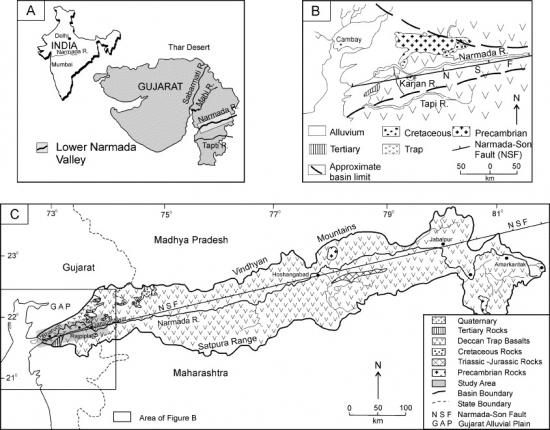Prashant Rupera
Source - http://timesofindia.indiatimes.com/city/vadodara/Was-Narmada-valley-the-centre-of-human-evolution/articleshow/15485975.cms
Much is known about how the Harappan Civilization flourished on the banks of the Indus almost 5,000 years back. But now is the time to move 'ahead' of the Indus Valley Civilization.
Through the largest exploration exercise ever undertaken, M S University's Department of Archaeology and Ancient History along with United States' Stone Age Institute will unearth evidence of our own ancestors.

MSU and Indiana-based Stone Age Institute at Gosport have joined hands for the 'Narmada Basin Paleoanthropology Project (NBPA)' with the target to collect all the paleoanthropological evidence within the last two million years.
"This project may throw new light giving credence to the belief that the Narmada Valley could have been the centre of human evolution," says professor K Krishnan, head of MSU's Department of Archaeology and Ancient History.
The project for the period of five years has its roots in the discovery of a vertebrate fossil record including the only pre-modern human fossil known in South Asia from - the Narmada Basin.
In 1980s, former director of Geological Survey of India (paleontologist) Arun Sonakia had created a sensation surprising the world with his discovery of the "only human fossil in Asia" from near Hoshangabad in Central Narmada Valley Basin in Madhya Pradesh which he said was that of a homo erectus (predecessors of today's human). In recent times, however, archaeologists have argued that although the discovery has been variably attributed to different species of homo, its age remains uncertain.
"Through this project, we will collect more human fossils, look at the context of this fossils and go for a precise dating methodology as very little dating of fossils has been done so far," co-director and research associate of NBPA from Stone Age Institute Parth Chauhan told TOI.
"Study at Narmada Basin is important because of its geographical location which is very strategic for migration of animal population from North to South and East to West. It is not only rich in fossils and archaeological sites, but it has a long history of human occupation and this region is facing submergence due to dam construction," says Chauhan.
"Through the project we are trying to know whether the human evolution in Narmada Valley was the same as other regions - Africa, China or Europe or whether the origin of African and European stone age cultures was the Narmada Valley," he says.
After the team of researchers carries out a systematic survey, excavations will be mainly carried out at sites like Dhansi, Hathnora, Pilikarar, Surajkund, Amonda, Mahadeo-Piparia (most of them located in the area within the limits of Houshangabad region."The study will not only cover the sites that are reported but we are sure that we will come across more number of sites. Most suitable will be chosen for excavation," adds Krishnan.